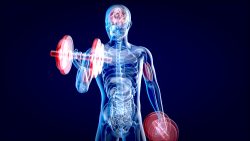Air Pollution Can Contribute to Heart Disease
 A recent study has shown that air pollution can lead to the development of arrhythmia, a medical condition characterized by abnormal heartbeats. Atrial fibrillation and atrial flutter are two types of arrhythmias that, if not treated, can cause heart disease or blood clots. It is worth noting that heart disease affected an estimated 244 million people worldwide in 2020, according to the American Heart Association.
A recent study has shown that air pollution can lead to the development of arrhythmia, a medical condition characterized by abnormal heartbeats. Atrial fibrillation and atrial flutter are two types of arrhythmias that, if not treated, can cause heart disease or blood clots. It is worth noting that heart disease affected an estimated 244 million people worldwide in 2020, according to the American Heart Association.
Compelling research indicates that air pollution may be a significant contributor to heart disease, yet its implications for arrhythmia remain widely unknown. The study sought to illuminate this relationship, gathering medical data from over 2,000 hospitals across 322 cities in China. Focusing on patients exhibiting sudden symptoms of arrhythmia, the team recorded air quality levels from monitoring stations in close proximity to each hospital. The results are illuminating and may have broad implications.
The study reveals that over 190,000 individuals were diagnosed with sudden-onset symptomatic arrhythmia, encompassing atrial flutter, atrial fibrillation, as well as premature beats originating in the heart’s atria or ventricles, and supraventricular tachycardia. This indicates that there is a heightened risk of symptomatic arrhythmia following acute exposure to ambient air pollution. This risk is most significant in the first few hours following exposure but can persist for up to 24 hours. It was observed that the relationship between exposures to 6 pollutants and 4 different subtypes of arrhythmias exhibited a linear trend, with no discernable threshold levels of concentration. These findings have significant implications for our understanding of the relationship between environmental factors and cardiac issues.
Inhaling polluted air is strongly linked to heart issues such as atrial flutter and supraventricular tachycardia, among others. Nitrogen dioxide, one of six pollutants studied, was found to have the strongest association with these conditions. The more polluted air patients are exposed to, the greater their risk of arrhythmias. The exact mechanisms are not fully understood, but evidence suggests that air pollution can cause oxidative stress, systemic inflammation, and impair autonomic nervous function, which can alter cardiac electrophysiological activities and lead to arrhythmias. Our findings support the biological plausibility of this link.
This research reveals yet another reason why air pollution is a dire threat to our lives.
To view the original scientific study click below:
Hourly air pollution exposure and the onset of symptomatic arrhythmia: an individual-level case–crossover study in 322 Chinese cities



 Did you know that just 30 minutes of phone use per week could increase your risk of high blood pressure, a leading cause of heart attacks and strokes? Recent research has found that individuals who spend even a short amount of time talking on their phone, even with hands-free devices, may see their risk for hypertension rise by 12%. And if you’re using your phone for more than 6 hours a week, your risk jumps by 25%. These findings may explain why rates of high blood pressure and heart disease have increased by more than double in recent years.
Did you know that just 30 minutes of phone use per week could increase your risk of high blood pressure, a leading cause of heart attacks and strokes? Recent research has found that individuals who spend even a short amount of time talking on their phone, even with hands-free devices, may see their risk for hypertension rise by 12%. And if you’re using your phone for more than 6 hours a week, your risk jumps by 25%. These findings may explain why rates of high blood pressure and heart disease have increased by more than double in recent years.  Recent findings show that exercise benefits not only the body but also the mind. In fact, a new publication in the journal Neuroscience points out that exercise has an even more profound impact on brain health than previously thought. This research investigates how chemicals produced by muscles during movement lead to neuronal development in the brain, specifically affecting the hippocampus areas responsible for long-term memory storage.
Recent findings show that exercise benefits not only the body but also the mind. In fact, a new publication in the journal Neuroscience points out that exercise has an even more profound impact on brain health than previously thought. This research investigates how chemicals produced by muscles during movement lead to neuronal development in the brain, specifically affecting the hippocampus areas responsible for long-term memory storage.  A newly developed test could shine a light on potential cognitive impairment ahead of any visible symptoms, offering invaluable insight into risk factors for the future.
A newly developed test could shine a light on potential cognitive impairment ahead of any visible symptoms, offering invaluable insight into risk factors for the future. A University of South Australia study has revealed a crucial link between vitamin D deficiencies and brain health- specifically, an increased risk for dementia.
A University of South Australia study has revealed a crucial link between vitamin D deficiencies and brain health- specifically, an increased risk for dementia. Looking for the secret to a healthier life? According to a recent study, it might be time to ditch the city and head to the mountains. Two million people living at elevations over 4,500 meters appear to have lower rates of metabolic diseases like coronary heart disease and diabetes. While daily mountain hikes could certainly contribute to good health, researchers now believe the key is low oxygen levels caused by high elevation living. This animal study could help find new ways to treat metabolic diseases by exploring the connection between oxygen levels and health.
Looking for the secret to a healthier life? According to a recent study, it might be time to ditch the city and head to the mountains. Two million people living at elevations over 4,500 meters appear to have lower rates of metabolic diseases like coronary heart disease and diabetes. While daily mountain hikes could certainly contribute to good health, researchers now believe the key is low oxygen levels caused by high elevation living. This animal study could help find new ways to treat metabolic diseases by exploring the connection between oxygen levels and health. Exercise isn’t just beneficial for your physical health, but it may also be the key to maintaining a healthy gut. A recent study found that exercise duration is an important factor when boosting the microbiome – having more of an impact than intensity alone. According to experts, regularly engaging in longer bouts of activity can provide significant advantages for overall gut well being.
Exercise isn’t just beneficial for your physical health, but it may also be the key to maintaining a healthy gut. A recent study found that exercise duration is an important factor when boosting the microbiome – having more of an impact than intensity alone. According to experts, regularly engaging in longer bouts of activity can provide significant advantages for overall gut well being. A collaborative study revealed a shocking toxicity of FDA-approved artificial sweeteners on digestive gut microbes. At concentrations as low as just one milligram per liter, the bacteria found in the human gastrointestinal tract became toxic. These substances have been previously approved by authorities for consumer use. Six major artificial sweeteners (sucralose, aspartame, saccharine, acesulfame potassium-k, advantame and neotame) specifically raised concern among researchers who conducted this groundbreaking research.
A collaborative study revealed a shocking toxicity of FDA-approved artificial sweeteners on digestive gut microbes. At concentrations as low as just one milligram per liter, the bacteria found in the human gastrointestinal tract became toxic. These substances have been previously approved by authorities for consumer use. Six major artificial sweeteners (sucralose, aspartame, saccharine, acesulfame potassium-k, advantame and neotame) specifically raised concern among researchers who conducted this groundbreaking research. Want to add 16 years to your life? A new study from the University of Leicester says it’s as simple as picking up the pace. Turns out, walking briskly might be the secret to aging gracefully.
Want to add 16 years to your life? A new study from the University of Leicester says it’s as simple as picking up the pace. Turns out, walking briskly might be the secret to aging gracefully. The rapidly increasing preference for fermented products like kombucha and kefir suggest that there is more to the story than merely health-conscientious consumers. Many cultures around the world have historically relied on these foods, suggesting a deeper significance beyond their preservation capabilities. These foods have clearly resonated among modern populations as well. From the traditional Korean Kimchi to Middle Eastern yogurt, nations have been consuming these foodstuffs for centuries. Could it be more than simply a method of preservation? Could it be that fermentation offers much more than just nutrition?
The rapidly increasing preference for fermented products like kombucha and kefir suggest that there is more to the story than merely health-conscientious consumers. Many cultures around the world have historically relied on these foods, suggesting a deeper significance beyond their preservation capabilities. These foods have clearly resonated among modern populations as well. From the traditional Korean Kimchi to Middle Eastern yogurt, nations have been consuming these foodstuffs for centuries. Could it be more than simply a method of preservation? Could it be that fermentation offers much more than just nutrition?